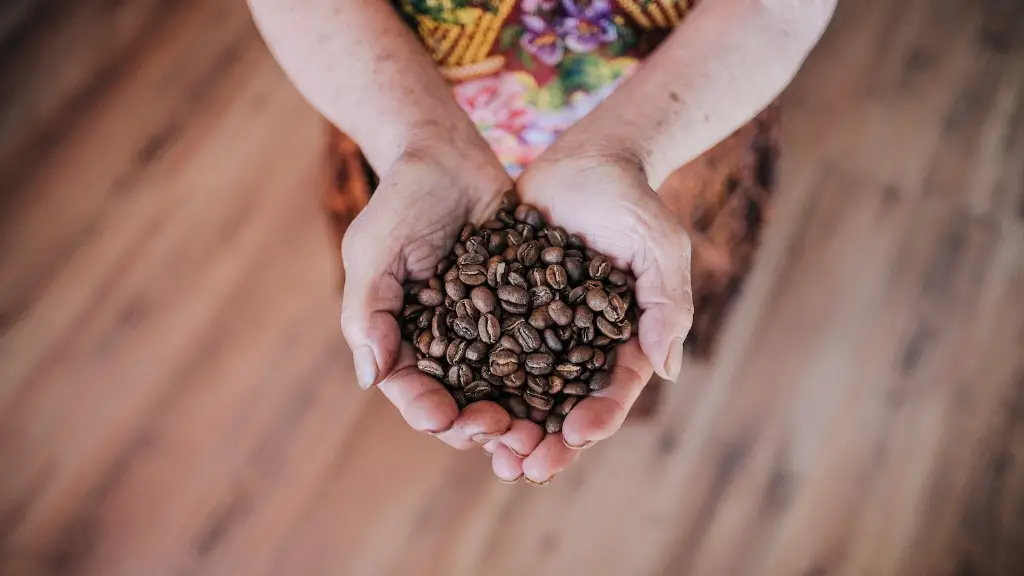Brewing the Perfect Pot
Turkish coffee is a unique, flavorful experience, and if you’re looking to learn how to make it, you’ve come to the right place. Turkish coffee is one of the oldest ways of preparing coffee. It is rich and smooth, and the full-bodied flavor has been enjoyed for centuries.
brewing Turkish coffee requires patience, skill and a few, special tools – namely the cezve and an ibrik.
For the best results, you will need to use the finest whole beans. Pre-ground for Turkish coffee will not be fine enough. It’s best to buy raw beans and grind them into a fine, powder-like consistency. Once the beans are ground, you need to place them in the cezve. As a rule of thumb, use one teaspoon of grounds per cup of water.
Pouring the water into the cezve first is key. You’ll want to add enough of lukewarm water to come up to the rim of the cezve. After that, add the coffee grounds, stirring them in a circular motion with a spoon. This will ensure that all the grounds are saturated as the water boils.
Your next step is to place the cezve over a low heat. Make sure your burner stays on low, or else you will burn the coffee in the bottom. Allow it to boil for three to four minutes, stirring from time to time. When the foaming gets thicker, take it off the heat and quickly spoon the foam into the serving cups – leaving out any sediment at the bottom.
Serve freshly brewed Turkish coffee hot or cold, depending on your preferences. Optional, but both sugar and cardamom can be added to the coffee while brewing to enhance the flavor. If you’re feeling especially fancy, decorate the cups with chocolate shavings and cinnamon powder.
Turkish coffee may take a bit more time and effort, but the result is well worth it.
Do’s and Don’ts
There are a few points you want to keep in mind while brewing Turkish coffee. Here are some of the do’s and don’ts when it comes to the perfect cup of Turkish coffee:
- Do not let the water boil for too long or your coffee will have a burned taste
- Do add sugar and cardamom for a real treat
- Do not add milk when making Turkish coffee
- Do use a fine-grained coffee, not pre-ground coffee
Benefits of Turkish Coffee
Turkish coffee, with its historical background and rich flavor, also has several additional benefits. It doesn’t contain any fat or cholesterol, and it can also reduce the risk of developing certain types of cancer. Turkish coffee is loaded with antioxidants that have a positive influence on bodily health, and its caffeine content (about half of a typical cup of coffee) offer a boost without compromising on taste.
In addition, Turkish coffee is made without any additives, preservatives or artificial flavors. All you get is the delicious and full-bodied flavor of natural coffee, combined with a range of subtle and delicate aromas.
Cezve vs. Ibrik
When selecting the right tools to make Turkish coffee, a cezve and an ibrik (or pot) will be the most helpful. Now, many people often don’t know the difference between the two, and to make matters more complicated, they are often used interchangeably. To clear the mist, the cezve is used to brew Turkish coffee in, while the ibrik is used to serve chilled or heated coffee.
A cezve is shaped like a pitcher and has a long handle. It is usually made of brass, copper or stainless steel. It has to be placed on an open flame and used to boil the coffee before serving. An ibrik looks more like a pot and its primary use is to serve hot sugared or unsugared coffee in. It is bigger and rounder than a cezve and is generally made of stainless steel, porcelain or china.
Read the Grounds for Fortune Telling
Turkish coffee is not only a traditional beverage but also a popular tool for fortune-telling – and the process is fairly easy. All you have to do once your coffee is served is turn the cup upside down and swirl the remaining grounds on the saucer. Then, wait for the grounds to cool and solidify. An experienced person will then interpret the shape formed by the grounds. The prognosis made can range from a prediction of the future to advice on how to overcome a current challenge.
In some cases, two people can use one cup if the two persons know each other very well. The cup is then turned twice and the pattern of the grounds will be analyzed according to the questions each person is asking.
Ottoman Traditions in Todays World
Despite being around for hundreds of years, Turkish coffee is still as popular as ever, with the warm drink becoming part of the “quotation of life” in many Arab countries. Even today, some of the most famous Turkish coffee houses are located in Istanbul. The city’s famous coffee houses offer a variety of drinks, sweets, and the occasional fortune-telling for an even better experience.
It is said that the Ottomans held the secret of the perfect cup of Turkish coffee close to their hearts. It could be argued that this is part of the added appeal to the tradition of sipping a cup of Turkish coffee. The mystery and experience associated with it will continue to draw in curiousity seekers for years to come.
Gifting Turkish Coffee
Turkish coffee is a great gift, offering a unique and personalized experience to all coffee lover out there. Whether it’s a traditional set, modern set or a mix of both, gifting someone a “coffee kit” with everything needed to make the perfect cup of Turkish coffee is a great option. Such a set usually includes an Ibrik, a Cezve, sugar, coffee and a tray with cup for serving.
Giving someone Turkish coffee as a present will show them you care about their happiness and about preserving and honoring tradition. That’s why Turkish coffee sets make a great gift for weddings and anniversaries, or simply as a treat for yourself.
Turkish Coffee vs Greek coffee
Turkish coffee and Greek coffee are very similar, but they have varying levels of coffee grind and boiling times. Turkish coffee is richer and stronger, with coffee grounds that are ground to a very fine consistency, while Greek coffee is boiled longer and more coarse. Both coffees are usually served hot and with little to no sweetener.
Greek coffee uses a kazan, or a traditional vessel, to heat the coffee. This vessel is set directly over a flame and the coffee is stirred to keep it from boiling and releasing steam. In contrast, Turkish coffee is brewed in a cezve that is placed over the flame, not in it.
Greek coffee is slower and stronger than Turkish coffee, with a stronger aroma and more pronounced sweetness depending on the amount of sugar added. Turkish coffee, on the other hand, is characterized by its creamy texture, deep aroma and full-bodied taste.





